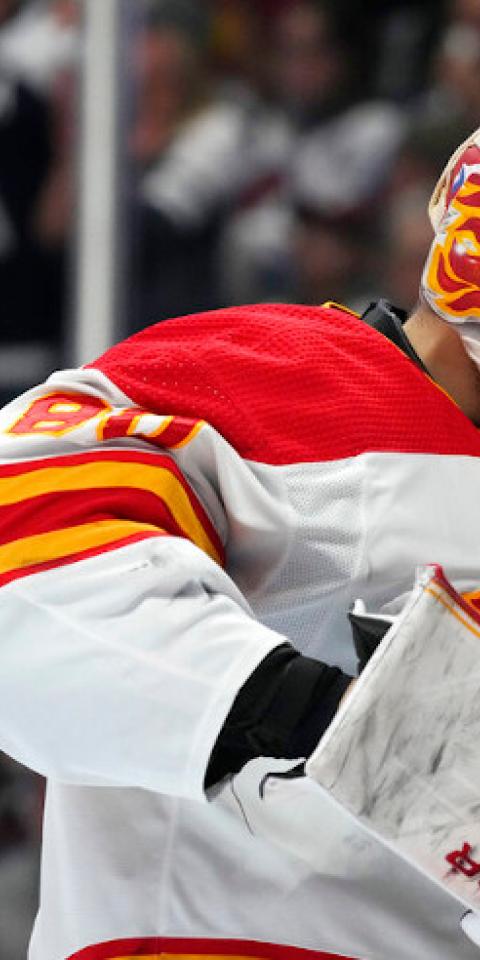While the NHL has pushed to make the league more competitive over the last few decades, we typically know which teams will make the playoffs by Thanksgiving. Of the teams in a playoff spot by then, only roughly 25 percent lose that position by year’s end. With a field of 16 playoff teams, that’s about four teams that will drop out of the playoffs from Thanksgiving to the end of the regular season.
Again, the league has pushed for more competitiveness, but the NHL-watching public as well as oddsmakers know who the good and bad teams are a few months into the season. The NHL’s competitiveness problem might not be as bad as the NBA’s, but the line of who should be the favorite and who should be the underdog is well established after about two months.
Visit Our Recommended NHL Betting Sites
New to betting on hockey? We have a great NHL betting tutorial to assist you in placing a wager on Stanley Cup odds. To find the sportsbook that’s right for you to get some money down on the ice, head over to our Sportsbook Review page.
So when it comes to wagering on NHL games, the chance to make a profit by simply betting the moneyline or puckline leaves little in the way of value for bettors.
But quality teams don’t always use their top-quality players for every game – specifically in the net. A top goalie can’t and won’t play all 82 games over a regular season. In 2021-22, no goalie had more starts than Juuse Saros’ 67. That’s 82 percent of his team’s games.
So what happens when a team’s starter isn’t between the posts to play? Is that where bettors might find some value? A favorite might tend to struggle when their first-choice goalie isn’t in the net. No?
NHL Backup Betting Trends: The Record
Since 2016, 1,486 games featured at least a single backup goalie in the NHL. Here are the betting trends:
- SU: 679-807 (45.7%)
- ATS: 707-779 (47.6%)
- O/U: 746-666-74 (50.2%)
The data speaks pretty clearly. When a backup is in the net, that team doesn’t tend to win straight up and doesn’t cover the puckline the majority of the time either. But they do typically hit on the OVER, though barely with a 50.2 percent conversion rate.
Which makes sense for any NHL fan. The backup is the backup for a reason. They’re the worse of the team’s two goalies on the roster. These backups are out there to cover for injury or to give the starter a rest on back-to-back nights or against lower-quality opponents.
NHL Backup Betting Trends: Overtime?
Again, there’s typically a strategy or plan in place for when to play a backup. It’s either the second leg of a back-to-back or when the team is facing off against a lower-caliber opponent.
Take the 2021-22 Calgary Flames, for example. Daniel Vladar started 19 of 82 games (23%). Of those 19 starts, 11 of them came in the second leg of back-to-backs, two were in the first leg of a back-to-back and three were against low-quality opponents (defined as the bottom 10 teams in the ’21-22 NHL point standings). Those 16 games cover 84 percent of his starts in the season, confirming how NHL teams utilize their second-string netminder.
So with that, do NHL teams, knowing they’ve got the second-best goalie on the squad in the net, hunker down per se, and effectively play for the extra point by going to overtime? Not really.
Of the 1,486 games with a backup since 2016, only 373 went to overtime, or 25 percent of the time. That’s up from the roughly 23 percent of games that go to overtime league-wide, regardless of who’s between the pipes.
An increase of two percentage points to the likelihood of overtime happening doesn’t mean bettors should run to take a three-way moneyline on NHL games and hammer a tie when the backup is in the net.
NHL Backup Betting Trends: Fade
It really seems like the takeaway for bettors here is to fade a team that’s starting the backup. Not only are they starting the lower-quality goalie but they’re typically doing so when the team is already at a disadvantage, like on the second leg of a back-to-back when NHL teams at the very least see a five percentage point decrease in their win probability compared to playing on the first leg of a back-to-back.
That drop is before factoring in whether the team is away or at home on that second leg of a back-to-back. The former is yet another disadvantage due to the home team getting the last change all night, submitting the starting roster second, and a number of other advantages.
Not to mention that straight up, teams with the backup in the net only win 45.7 percent of the time and cover the spread just as often (47.6%).
So while having the backup in the net isn’t enough to inform any bettor which way to go, it should be added to your decision-making process when betting on NHL games.




